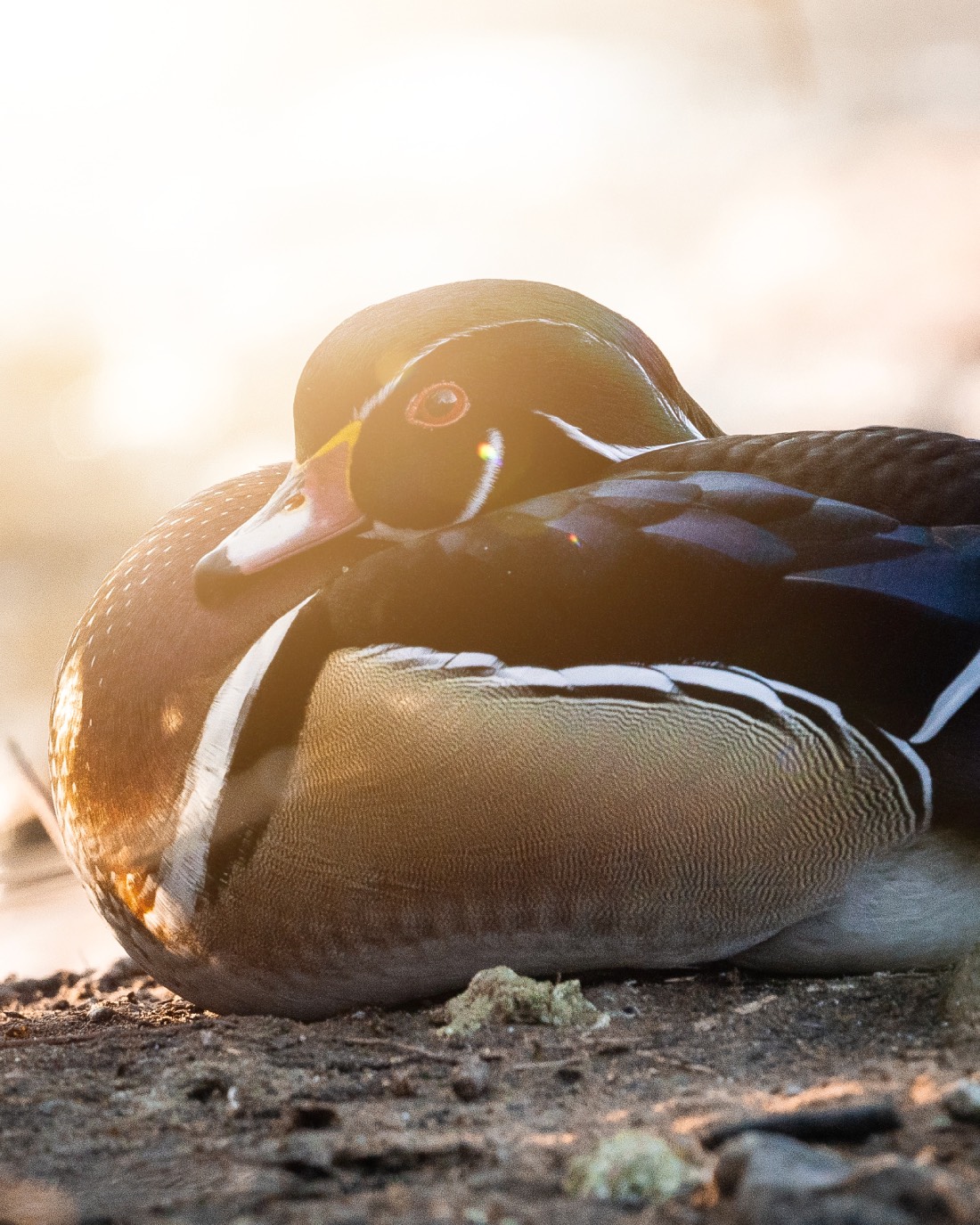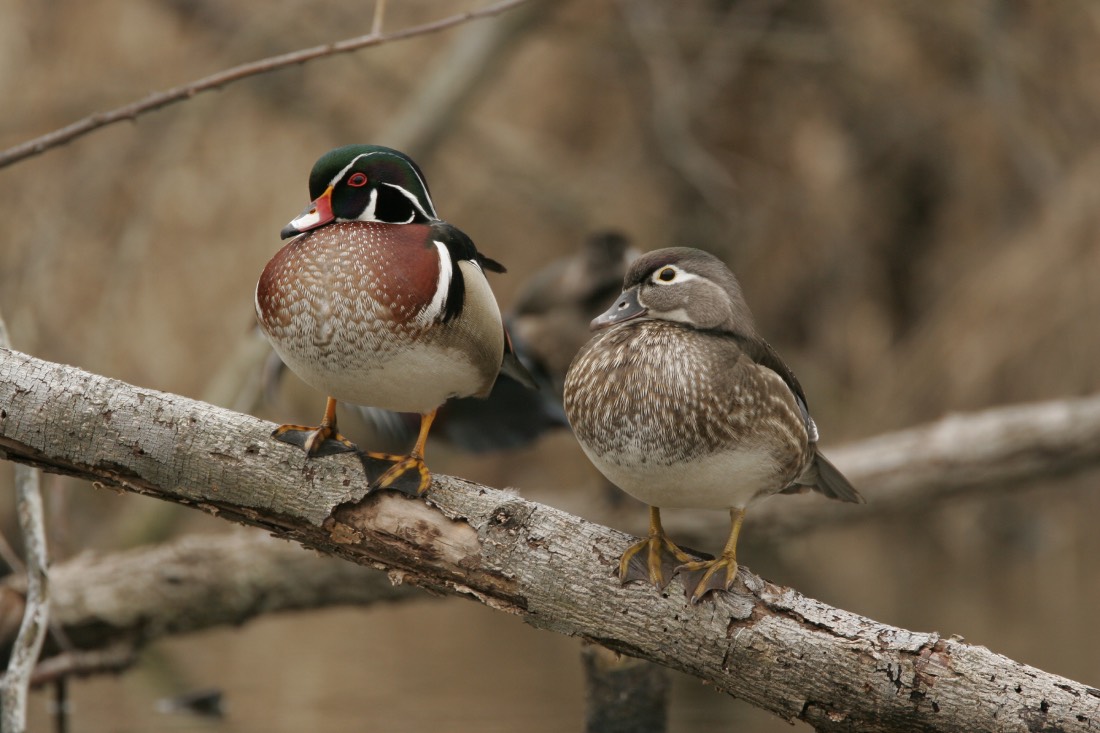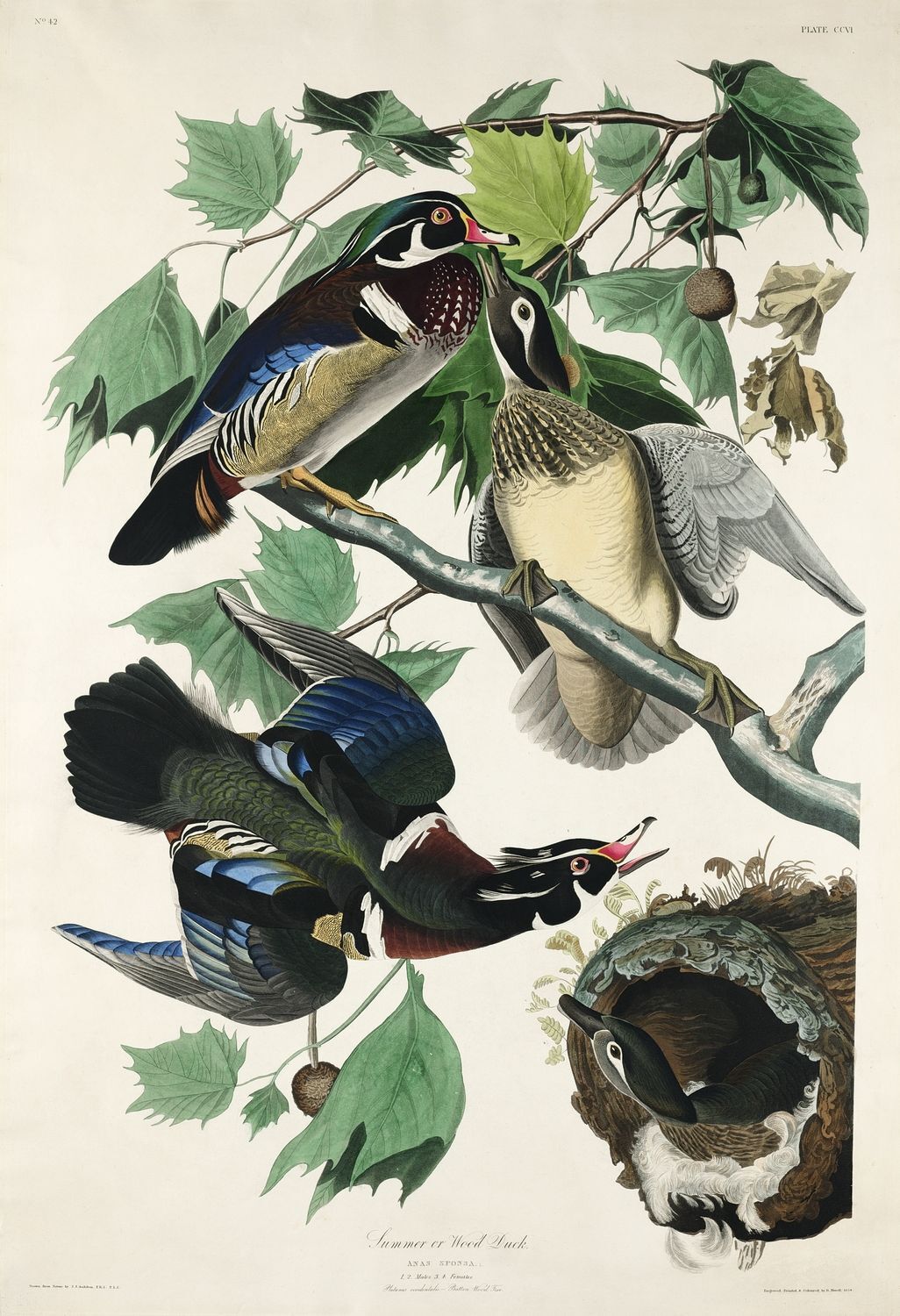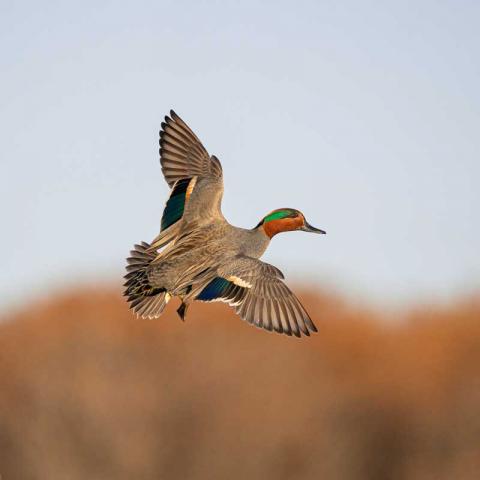
Photography by Eric Shaeffer
Written by Bob Humphrey
They come on whistling wings in the dimness of dawn, announcing their arrival with high-pitched squeals and reedy whistles. Dark silhouettes filter down through the treetops, guns blaze and retrievers swim toward the splashes of falling birds, then return with some of the most spectacular specimens in the waterfowl world - wood ducks.

Photography by Delmarvphoto
The wood duck (Aix sponsa) is the only member of its genus in North America, and one of only two species worldwide. Its common name is derived from its preferred habitat - flooded timber and bottomland swamps where it perches on branches and nests in tree cavities. When swimming, woodies sometimes jerk their head back and forth, much like a walking pigeon. They’re less gregarious than other ducks, often found in smaller groups or pairs. Rather than quacking, females make a loud, short squeak. Males have a thin, raspy whistle.
Wood Duck Description
Wood duck males are one of the most spectacular of all waterfowl species. Bright red eyes contrast sharply against their iridescent green heads, which are sharply accented with white stripes and feathers trailing off in a tufted cape. The deep chestnut neck and chest ends abruptly with a dark blue back and buff vermiculated flanks, also accented with white. Even the bill shows pied patches of orange, yellow, black and white. Females are a drabber version with dark eyes and a distinctive white eye ring.
Average length: 20"
Average weight: 23 ounces
Wood Duck Breeding Range and Distribution
Considered largely an eastern species, the wood duck’s breeding range spans from Atlantic Canada south to northern New England and west to Manitoba, the eastern Dakotas and parts of Montana, Wyoming and southern British Columbia. While their year-round range is also predominantly the eastern half of the U.S., they do occur across much of the southwest and central states and the northwest and California.
Wood Duck Migrating and Wintering
Most wood ducks migrate down the Atlantic and Mississippi Flyways, wintering predominantly in flooded timber and wooded wetlands in the southeastern and Gulf states. Smaller numbers from western populations use the Central and Pacific Flyways and winter where suitable habitat occurs.

Painting by John James Audubon
Wood Duck Conservation and Hunting
Like the wild turkey and white-tailed deer, the wood duck’s recovery is one of conservation’s great success stories. Rather than prairie potholes and sub-Arctic tundra, the wood duck’s southern breeding range put them in close proximity to humans. Widespread destruction of bottomland hardwood forests and market gunning nearly led to their demise by the early 20th Century. Enactment of the Migratory Bird Treaty Act in 1918, protection of remaining areas of flooded forest and a concerted program of artificial nest boxes helped turn the tide and populations slowly recovered. Today there are an estimated 3 million breeding pairs occurring mostly in the Atlantic and Mississippi Flyways with smaller numbers in the Central and Pacific Flyways.
Four Keys to Successful Wood Duck Boxes
Wood ducks typically make up around 10 percent of the annual duck harvest in the U.S., being second only to mallards in the Atlantic and Mississippi Flyways. Due to historical declines and the difficulty in estimating population size, bag limits remain conservative. Recent research suggests little negative impact where more liberal seasons were applied, but wildlife managers remain cautious.
Wood ducks can be taken with conventional methods - a spread of decoys on the shore of a freshwater marsh or pond - and often turn up in the bag of those hunting other species like mallards and black ducks. Floating down a lazy stream or jump-shooting the oxbow ponds is another popular tactic, but the classic method involves hunting the flooded timber. Gunners stand against the trunks of giant oaks and cypress amongst a spread of decoys, often kicking the water to create motion in the water that simulates feeding ducks. Shots are often close and nearly straight overhead as the birds whiffle down through the treetops.




























